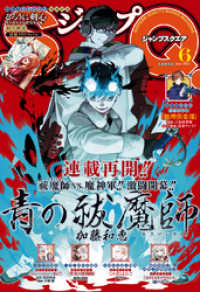基本説明
Considers how common they are and why they occur. It also provides a comprehensive description of how the physical, communicative, educational, and behavioural effects are managed, in both the short- and long-term.
Full Description
Brain injuries are common in children, typically following head trauma but also complicating meningitis, encephalitis, cerebrovascular haemorrhage (stroke) and brain tumours. Many children suffer irreversible impairments and are left with major physical, educational and behavioural disabilities. This has tremendous implications for health, education and social services. The survivors of brain injuries pose a significant burden on the NHS, the community and families. Despite this, resources are limited or non-existent in many parts of the UK and, consequently, many hospitals, schools and education authorities, and social services are unsure how to address the many problems shown by these children and their families.
The new edition of 'Management of Brain Injured Children' provides a detailed account of brain injuries in children. It considers how common they are, why they occur, and how they may be prevented. It also explains how children are resuscitated following the acute insult, and provides a comprehensive description of how the physical, communicative, educational, and behavioural effects are managed, in both the short- and long-term, and how this impacts on the family. A parent's experience of having a child who suffered a severe head injury provides an invaluable contribution, as does the account of her daughter, now a teenager. The book concludes with appendices detailing useful support organisations and relevant governmental and other agencies' publications. Referencing is thorough and up-to-date, providing readers with useful sources of information for additional reading.
Contents
1. Epidemiology - incidence, causes, severity and outcome ; 2. Resuscitation and acute treatment of brain injuries (traumatic and atraumatic) ; 3. Brain (head) injury team ; 4. Immediate medical and nursing needs ; 5. Physical (motor and functional) problems ; 6. Feeding and swallowing problems ; 7. Speech and language problems ; 8. Cognitive problems ; 9. Emotional, behavioural, psychiatric and social problems ; 10. The impact of brain injury on the family ; 11. Community liaison ; 12. Prevention of brain injury ; 13. The future ; 14. A parent's - and her brain-injured daughter's - view
-

- 電子書籍
- パイナップルARMY 完全増補デジタル…
-

- 電子書籍
- シンジュウエンド【タテヨミ】 39 ク…
-

- 電子書籍
- ゾンビのあふれた世界で俺だけが襲われな…
-

- 電子書籍
- LoveLive!Sunshine!!…
-

- 電子書籍
- ジャンプSQ. 2022年6月号



